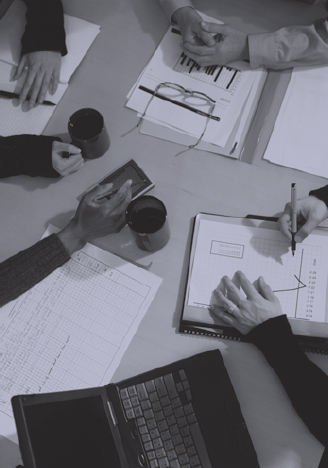Experience Counts Learning Lessons from Key Events
by Christopher Ernst and André Martin

How can leaders help their groups learn lessons-whether positive or negative-from key events? A process that CCL calls critical reflections begins with a key event and is followed by three stages: exploring, reflecting, and projecting. The goal is to create a specific action plan that will set the stage for a productive future.
In a world of complexity and rapid change, one certainty is that individuals, groups, and organizations that can continually learn from experience will be more flexible in meeting the challenges of tomorrow. When people undertake shared work over time, certain key events stand out as having the potential to teach lasting lessons to the group as a whole. These types of experiences are the classrooms in which people learn, improve, and grow.
Yet these lessons of experience can easily be missed in the pursuit of the next big project, client, or initiative. To capture the best repeatable practices and identify avoidable mistakes, groups need to be able to learn in the moment, as they work—not afterward when it's too late to change.
Group leaders play an important role in this process. As a leader, have you ever
![]() Been part of a project that never felt complete—things were left unsaid or tasks left undone?
Been part of a project that never felt complete—things were left unsaid or tasks left undone?
![]() Found yourself halfway into an initiative when you suddenly had a feeling of déjà vu but couldn't pinpoint what you had learned the last time around?
Found yourself halfway into an initiative when you suddenly had a feeling of déjà vu but couldn't pinpoint what you had learned the last time around?
![]() Felt you missed an opportunity to capture meaningful learning for yourself, your group, or your organization?
Felt you missed an opportunity to capture meaningful learning for yourself, your group, or your organization?
![]() Been part of an event or initiative and felt frustrated that the lessons experienced by the group could not be transferred and shared with the organization as a whole?
Been part of an event or initiative and felt frustrated that the lessons experienced by the group could not be transferred and shared with the organization as a whole?
A process that CCL calls critical reflections can help leaders address all these situations. Unlike training sessions or conferences that take place away from work, the learning from critical reflections occurs on the job. The process embeds learning into doing the work itself, helping leaders simultaneously achieve organizational results and new learning and growth.
The critical reflections process is used with groups to capture lessons of experience, from both successful and unsuccessful events. The process allows groups to take a key event and figuratively place it in the middle— that is, treat it as an object on which to reflect and from which to learn. The concept of putting something in the middle allows groups to suspend judgment and to focus their attention in a constructive and positive way.
The process begins with a key event and moves through three stages:
Exploring: reliving the event and sharing perceptions of what happened
Reflecting: reaching an understanding of how and why the event occurred
Projecting: harvesting lessons for the future
